Seasonal Affective Disorder (SAD) is a type of depression associated with changes in the seasons – it happens at about the same time every year. Most people inflicted with SAD experience symptoms during the fall and winter, which saps their energy and leaves them feeling moody.
Depression is less common during spring and early summer due to SAD. SAD can also be treated with medications, light therapy (phototherapy) and psychotherapy.
Those feelings aren’t simply the result of the “winter blues” or funk that you somehow have to get over on your own. To stay motivated throughout the entire year, you should keep your mood stable.
What causes seasonal affective disorder (SAD)?
No one knows exactly the cause of seasonal depression. People who have a tendency to get it may be triggered by a lack of sunlight. Here are some theories:
- Biological clock change: Biological clocks adjust when a person receives less sunlight. The clock controls sleep, mood and hormones. People who experience a change in it may find it difficult to regulate their moods.
- Brain chemical imbalance: Neurotransmitters conduct nerve signals in the brain. Chemicals associated with happiness include serotonin. Those who are at risk of SAD may already have reduced activity of serotonin. The lack of sun in the winter can worsen the situation since sunlight helps regulate serotonin. This can lead to mood swings as serotonin levels drop.
- Vitamin D deficit: Vitamin D boosts serotonin production as well. Since sunlight is necessary to produce vitamin D, a lack of sunlight during the winter may cause vitamin D deficiency. This may affect mood and serotonin production.
- Melatonin boost: Melatonin has a sleep-regulating effect. Melatonin may be overproduced by some individuals due to a lack of sunlight. This could lead to them feeling drowsy and tired.
- Negative thoughts: The winter causes stress, anxiety and negative thoughts for people with SAD. Negative thoughts aren’t known to cause seasonal depression, but they may be associated with it.
Read: Work Depression
Is anyone at risk for seasonal depression?
Seasonal depression is more common in young women. It’s also more common in people who:
- Suffer from another mood disorder, such as major depressive disorder or bipolar disorder.
- Have a relative who suffers from other mental health problems.
- Live at high latitudes (further north of the equator), such as Alaskans and New Englanders.
- Live in cloudy environment.
There are also other mental conditions that may be present in people with seasonal affective disorder, including:
What are the symptoms of seasonal affective disorder (SAD)?
An individual with SAD suffers from a type of depression, not a distinct illness. The following are some signs of depression that may accompany seasonal affective disorder:
- Sadness
- Anxiety
- Cravings for carbohydrates and weight gain
- A lack of energy and extreme fatigue
- Hopelessness or feelings of worthlessness
- Inability to concentrate
- Irritability
- Limbs feeling heavy
- Retraction from usual activities, such as social gatherings
- Sleeping more
- Death or suicide thoughts
SAD sufferers may experience:
- Agitation and restlessness
- Anxiety
- Loss of appetite and weight
- Violent episodes
- Trouble sleeping
Read: Internet Addiction Disorder
How is seasonal affective disorder (SAD) diagnosed?
You should not attempt to diagnose SAD on your own if you have symptoms. Consult a healthcare provider to get an accurate diagnosis. It could be that you have an underlying physical condition that is creating your depression. SAD is sometimes part of a broader mental health issue.
A psychiatrist or psychologist may be able to help. The mental health professionals discuss the symptoms with you. You are diagnosed with seasonal depression or another mood disorder based on the pattern of your symptoms. The presence of SAD may be determined by filling out a questionnaire.
Is there a test I need to diagnose seasonal affective disorder (SAD)?
SAD cannot be diagnosed by blood tests or scans. If you have symptoms similar to those described above, your doctor may still recommend testing.
What are the criteria for the diagnosis of seasonal affective disorder (SAD)?
SAD may be diagnosed by your healthcare provider if you have:
An episode of depression occurs more frequently during a particular season than during the remainder of the year.
- Symptoms of major depression
- At least two consecutive years of depression during specific seasons
Read: COVID-19 and Depression
What is the treatment for seasonal affective disorder?
You can discuss treatment options with your provider. It may be necessary to use a range of treatments, including:
- Phototherapy: Special lamps can provide bright light therapy for SAD.
- Cognitive behavioral therapy (CBT): CBT is also an effective therapy for SAD. CBT has been found to have the longest-lasting effects of all approaches to treatment.
- Antidepressant medication: Providers may prescribe depression medications alone or with light therapy.
- Spending time outdoors: Exposure to sunlight can alleviate depression symptoms. Make the most of the daytime. Make your workspace and home more bright.
- Take vitamin D: Vitamin D supplements can improve symptoms.
What is the effect of light therapy?
A special lamp is required for phototherapy or light therapy. A plastic screen blocks ultraviolet rays on the white fluorescent tubes. They have about 20 times the brightness of traditional indoor lighting. They emit 10,000 lux of light.
Be careful when using phototherapy as it can be dangerous. While you read, eat, or do other activities, place the lamp about two or three feet away.
When should I use light therapy?
You may find it more effective at a certain time. Some people find that morning light therapy is more effective. It may also cause insomnia later in the day if used later. Doctors recommend using 10,000 lux every morning for 15 to 30 minutes.
Read: How to Get Out of a Depressive Episode
What is the timeframe for light therapy?
SAD sufferers typically see improvement within two to four days after using a lamp. Full benefits usually occur after about two weeks.
What is the recommended duration of light therapy?
Light therapy is usually recommended for the entire winter. Once you stop the light therapy, the symptoms of SAD may return. It is possible for you to keep using the therapy throughout the season.
Is light therapy safe?
Light therapy is generally considered safe and well-tolerated. However, it may not be suitable for people who:
- Have diabetes or retinopathies. People with diabetes and retinal conditions may be at risk of damaging their retina, the back of their eyes.
- Take some medications. You may become more sensitive to sunlight if you take certain antibiotics and anti-inflammatory medicines. This can make light therapy potentially harmful.
- Have bipolar disorder. It can lead to hypomania, mania, uncontrollable mood rises, and excessive energy levels. Bipolar patients who use light therapy require medical supervision.
Are there any side effects of light therapy?
You might experience:
Read: Melancholic Depression
Is it possible to prevent seasonal affective disorder (SAD)?
The first episode may not be preventable. You can take steps to prevent seasonal depression from recurring once your provider has diagnosed you with it:
- Use your light box: If you feel SAD symptoms in the fall, start using light therapy then.
- Get out: Enjoy the outdoors regardless of whether it’s sunny or cloudy. Natural light can boost your mood.
- Eat a well-balanced diet: Stick to nutritious foods despite your body’s desire for sweet and starchy foods. You can get the energy you need from a healthy diet that is rich in vitamins and minerals.
- Exercise: Exercise every day for 30 minutes.
- See friends: Engage in regular activities and social circles. You may find support from them this winter.
- Find help: Talk to someone who is trained in cognitive behavioral therapy. SAD can be very effectively treated by cognitive behavioral therapy.
- Consider medications: You may want to speak with your physician about taking an antidepressant. If your symptoms persist after other treatments or are severe, you may need medications. It is possible to prevent episodes of SAD by taking medication before they begin.
You may benefit from early treatment as a preventive measure, so check with your healthcare provider.
Prrognosis
Its outlook is positive. There are treatments available. Symptom relief can be achieved by getting the right diagnosis and treatment combination. Find out which treatment works best for you by talking to your healthcare provider.
Will SAD return?
Seasonal affective disorder can affect people every year for those who are prone to it. The symptoms can be prevented or reduced by taking steps beforehand.
Read: Endogenous Depression
What is the best time to go to the emergency room?
If you or someone you love has suicidal thoughts, seek help. You can contact your healthcare provider, go to the ER, dial 911, or call the National Suicide Prevention Lifeline at 800.273.8255. People in emotional distress or suicidal crisis can get free, confidential support from this national network of crisis centers. Support is available around the clock.
What questions should I ask my healthcare provider?
When you have seasonal affective disorder, ask:
- What is the best treatment for me?
- What can I do to prevent episodes of depression?
- Do light therapies work?
- Do antidepressants work?
- What is the most appropriate time to begin treatment?
- When should I stop taking them?
- How can I improve my symptoms by eating (or avoiding) certain foods?
- Are there any other ways I can feel better?
Is it possible to get summer depression?
SAD is sometimes called “summer depression,” which occurs in the late spring or early summer and ends in the fall for some people.
Read: Teen Depression
Bottom line
Seasonal affective disorder refers to a type of depression that occurs every year during a particular season, typically during the winter. It can cause a feeling of hopelessness and a lack of energy. Fortunately, seasonal depression can be treated. Speak with your doctor. A special lamp could be recommended. Such lamps produce bright light to alleviate symptoms. Medicines that combat depression can also be of assistance. If you have experienced seasonal depression before, discuss treatment with your provider before you feel symptoms.
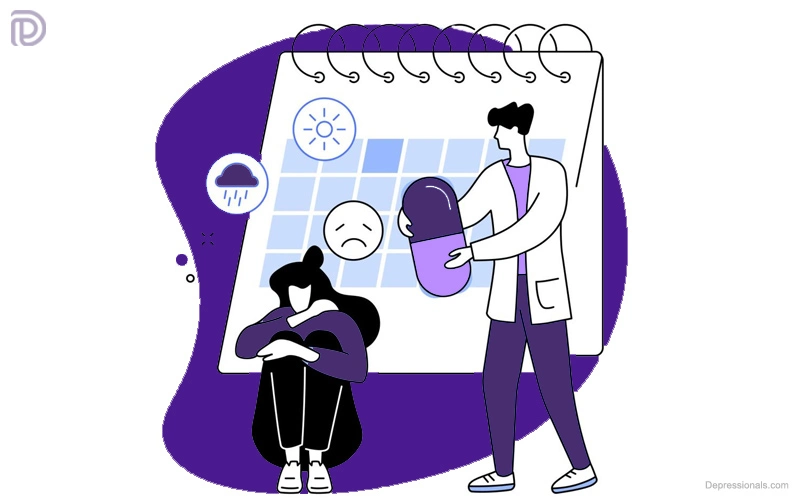
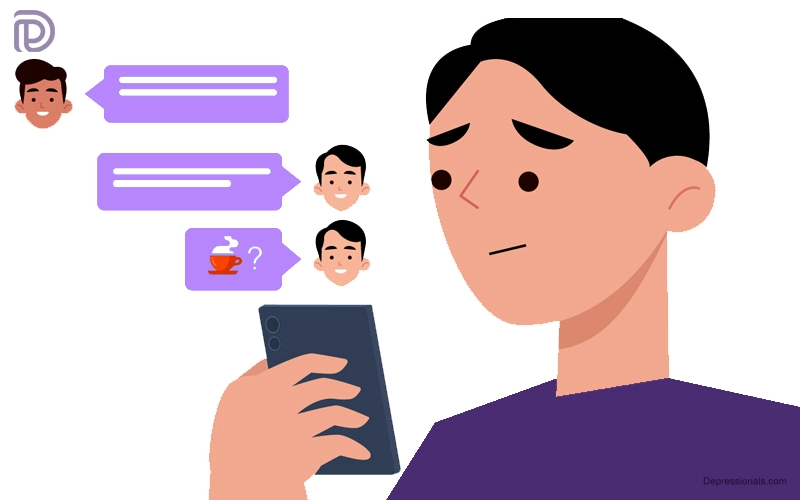
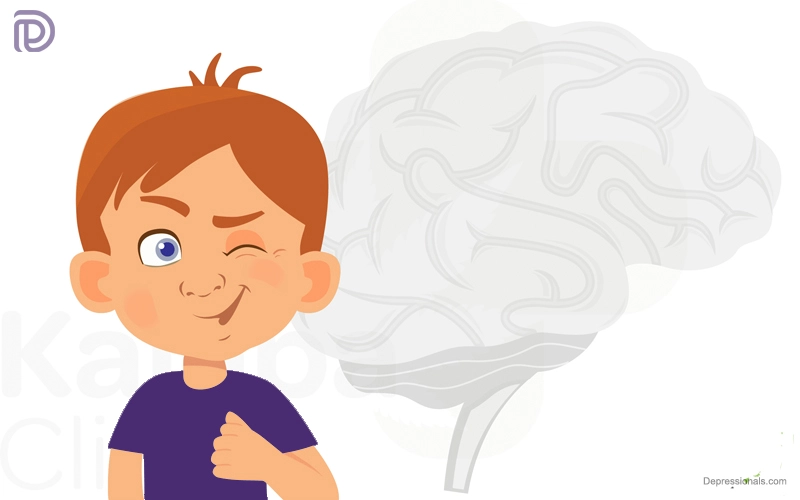
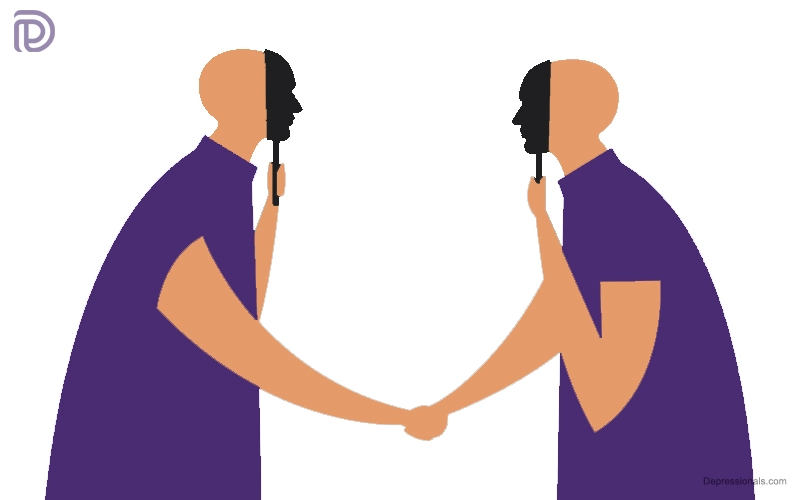
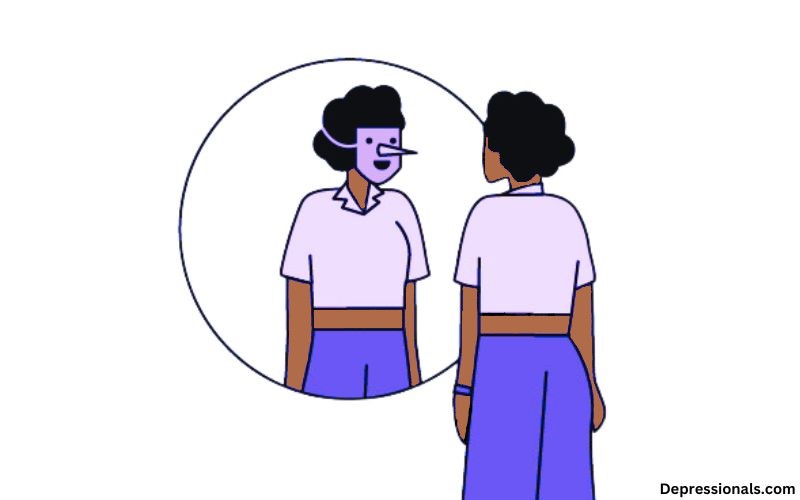

My brother recommended I may like this blog. He used to be entirely right. This submit actually made my day. You cann’t consider just how a lot time I had spent for this information! Thank you!
Thank you for your articles. I find them very helpful. Could you help me with something?
I really enjoyed reading your post, especially because it addressed my issue. It helped me a lot and I hope it can help others too.
Spot on with this write-up, I truly suppose this website wants rather more consideration. I?ll in all probability be again to learn rather more, thanks for that info.
Thanks for your recommendations on this blog.
Interesting blog post.
We are a group of volunteers and opening a new scheme in our community. Your website provided us with useful information to paintings on. You’ve performed an impressive process and our whole neighborhood shall be thankful to you.
You’ve been very helpful to me. Thank you!
Thanks for posting. I really enjoyed reading it, especially because it addressed my issue. It helped me a lot and I hope it will help others too.
you’re really a excellent webmaster. The site loading pace is incredible. It sort of feels that you are doing any distinctive trick. Moreover, The contents are masterwork. you have done a great activity on this topic!
Thank you for writing this post!
Thank you for your articles. They are very helpful to me. May I ask you a question?
You’ve been a great aid to me. You’re welcome!
Youre so cool! I dont suppose Ive read something like this before. So good to search out any individual with some unique thoughts on this subject. realy thanks for beginning this up. this web site is one thing that is wanted on the web, someone with a little originality. helpful job for bringing one thing new to the web!
Thanks for writing this article. I enjoy the topic too.
I want to thank you for your assistance and this post. It’s been great.
Thank you for your articles. I find them very helpful. Could you help me with something?
I’ve to say you’ve been really helpful to me. Thank you!
Thank you for your excellent articles. May I ask for more information?
Dude these articles were really helpful to me. Thanks a lot.
You’ve been great to me. Thank you!
Thank you for writing about this topic. It helped me a lot and I hope it can help others too.
Thank you for providing me with these article examples. May I ask you a question?
Thank you for posting this post. I found it extremely helpful because it explained what I was trying to say. I hope it can help others as well.
You’ve been really helpful to me. Thank you!
I really enjoyed reading this article
I want to thank you for your assistance and this post. It’s been great.
That’s what i mean when i say that content is the king!
It was really helpful to read an article like this one, because it helped me learn about the topic.
Thank you for your post. I really enjoyed reading it, especially because it addressed my issue. It helped me a lot and I hope it will help others too.
Hello there! Do you use Twitter? I’d like to follow you if
that would be okay. I’m absolutely enjoying your blog and look forward to nnew
posts.
whoah this blog is magnificent i love reading your articles. Keep up the good work! You know, a lot of people are hunting around for this information, you can aid them greatly.
My programmer is trying to convince me to move to .net from PHP. I have always disliked the idea because of the costs. But he’s tryiong none the less. I’ve been using WordPress on a variety of websites for about a year and am anxious about switching to another platform. I have heard fantastic things about blogengine.net. Is there a way I can import all my wordpress posts into it? Any help would be really appreciated!
Top site ,.. amazaing post ! Just keep the work on !
I and also my friends were found to be checking out the good recommendations on the website and instantly I got an awful feeling I had not thanked the web blog owner for those secrets.
Hi, I think your blog might be having browser compatibility issues. When I look at your blog site in Firefox, it looks fine but when opening in Internet Explorer, it has some overlapping. I just wanted to give you a quick heads up! Other then that, amazing blog!
Thanks a lot for the helpful article.
Hi! Someone in my Myspace group shared this site with us so I came to check it out. I’m definitely loving the information. I’m book-marking and will be tweeting this to my followers! Superb blog and superb design.
Magnificent beat ! I would like to apprentice whilst you amend your site, how can i subscribe for a blog web site? The account helped me a applicable deal. I have been tiny bit familiar of this your broadcast offered vivid transparent idea
Thanks a bunch for the different recommendations I have learned from your blog site.
I’ll immediately clutch your rss feed as I can not in finding your e-mail subscription link or newsletter service. Do you’ve any? Please allow me to recognize in order that I may subscribe. Thanks.
I really appreciate this post. I’ve been looking everywhere for this! Thank goodness I found it on Bing. You have made my day! Thank you again
One important thing is that when you find yourself searching for a education loan you may find that you’ll need a co-signer. There are many cases where this is true because you should find that you do not possess a past history of credit so the financial institution will require that you have someone cosign the money for you. Good post.
Do you mind if I quote a few of your articles as long as I provide credit and sources back to your webpage? My blog is in the exact same niche as yours and my visitors would definitely benefit from some of the information you present here. Please let me know if this ok with you. Cheers!
Great work! This is the type of info that should be shared around the net. Shame on the search engines for not positioning this post higher! Come on over and visit my web site . Thanks =)
One thing I’ve noticed is that often there are plenty of misguided beliefs regarding the finance institutions intentions any time talking about foreclosed. One fantasy in particular would be the fact the bank wants your house. The bank wants your dollars, not the house. They want the bucks they gave you along with interest. Avoiding the bank will undoubtedly draw some sort of foreclosed realization. Thanks for your posting.
Valuable information. Fortunately me I found your site unintentionally, and I am shocked why this twist of fate did not came about earlier! I bookmarked it.
I have noticed that car insurance providers know the automobiles which are prone to accidents along with other risks. In addition they know what types of cars are given to higher risk as well as the higher risk they’ve got the higher a premium fee. Understanding the very simple basics with car insurance can help you choose the right kind of insurance policy that should take care of your family needs in case you happen to be involved in an accident. Many thanks sharing the ideas for your blog.
Can I just say what a reduction to search out somebody who actually is aware of what theyre talking about on the internet. You positively know find out how to deliver a difficulty to light and make it important. More people must read this and perceive this aspect of the story. I cant imagine youre not more in style because you undoubtedly have the gift.
One thing I’d really like to say is that often car insurance cancellations is a terrifying experience and if you’re doing the best things as a driver you won’t get one. Lots of people do are sent the notice that they are officially dropped by the insurance company they have to fight to get supplemental insurance after the cancellation. Low-cost auto insurance rates are usually hard to get after having a cancellation. Having the main reasons for auto insurance canceling can help motorists prevent burning off one of the most essential privileges out there. Thanks for the concepts shared via your blog.
I simply couldn’t go away your web site prior to suggesting that I really loved the usual information a person supply for your guests? Is gonna be again incessantly in order to check out new posts
With the whole thing that appears to be building within this subject matter, all your viewpoints are actually somewhat exciting. However, I beg your pardon, but I do not subscribe to your whole strategy, all be it exciting none the less. It appears to me that your comments are generally not entirely rationalized and in simple fact you are yourself not really entirely convinced of the assertion. In any case I did take pleasure in reading through it.
Hi there, I found your website via Google while looking for a related topic, your web site came up, it looks great. I’ve bookmarked it in my google bookmarks.
Simply desire to say your article is as astounding. The clearness in your post is simply spectacular and i could assume you’re an expert on this subject. Well with your permission allow me to grab your RSS feed to keep up to date with forthcoming post. Thanks a million and please carry on the gratifying work.
Hi! Would you mind if I share your blog with my myspace group? There’s a lot of folks that I think would really enjoy your content. Please let me know. Cheers
There are definitely lots of particulars like that to take into consideration. That could be a nice point to deliver up. I offer the thoughts above as general inspiration however clearly there are questions like the one you deliver up where a very powerful factor can be working in trustworthy good faith. I don?t know if greatest practices have emerged around things like that, but I’m sure that your job is clearly recognized as a fair game. Both girls and boys feel the affect of only a moment pleasure, for the rest of their lives.
In line with my observation, after a in foreclosure process home is offered at an auction, it is common for that borrower in order to still have some sort ofthat remaining unpaid debt on the bank loan. There are many creditors who aim to have all charges and liens repaid by the following buyer. Having said that, depending on specific programs, regulations, and state legal guidelines there may be many loans which are not easily fixed through the exchange of loans. Therefore, the duty still falls on the debtor that has had his or her property in foreclosure process. Thank you for sharing your thinking on this website.
The following time I learn a blog, I hope that it doesnt disappoint me as a lot as this one. I imply, I do know it was my choice to read, however I truly thought youd have one thing fascinating to say. All I hear is a bunch of whining about something that you could repair for those who werent too busy looking for attention.
Simply wish to say your article is as astonishing. The clarity to your publish is simply cool and that i could think you’re knowledgeable on this subject. Fine together with your permission allow me to snatch your RSS feed to keep up to date with approaching post. Thanks one million and please continue the rewarding work.
You could definitely see your enthusiasm within the work you write. The world hopes for even more passionate writers like you who aren’t afraid to mention how they believe. Always go after your heart.
It is the best time to make a few plans for the future and it’s time to be happy. I’ve learn this publish and if I may just I wish to recommend you few fascinating things or tips. Maybe you could write subsequent articles referring to this article. I wish to learn even more things about it!
You delivered such an impressive piece to read, giving every subject enlightenment for us to gain information. Thanks for sharing such information with us due to which my several concepts have been cleared.
Outstanding post however I was wondering if you could write a little more on this subject? I’d be very grateful if you could elaborate a little bit more. Cheers!